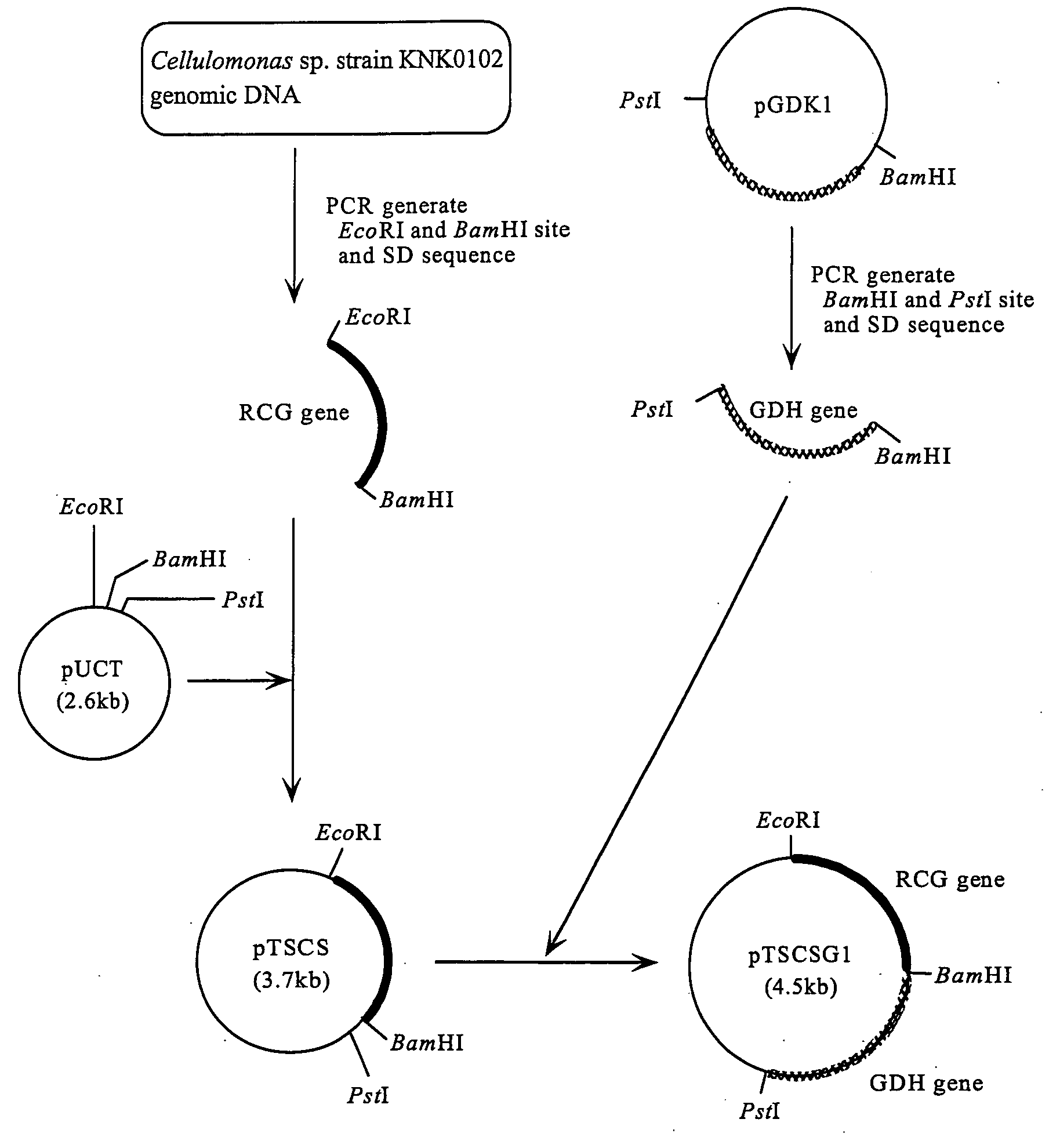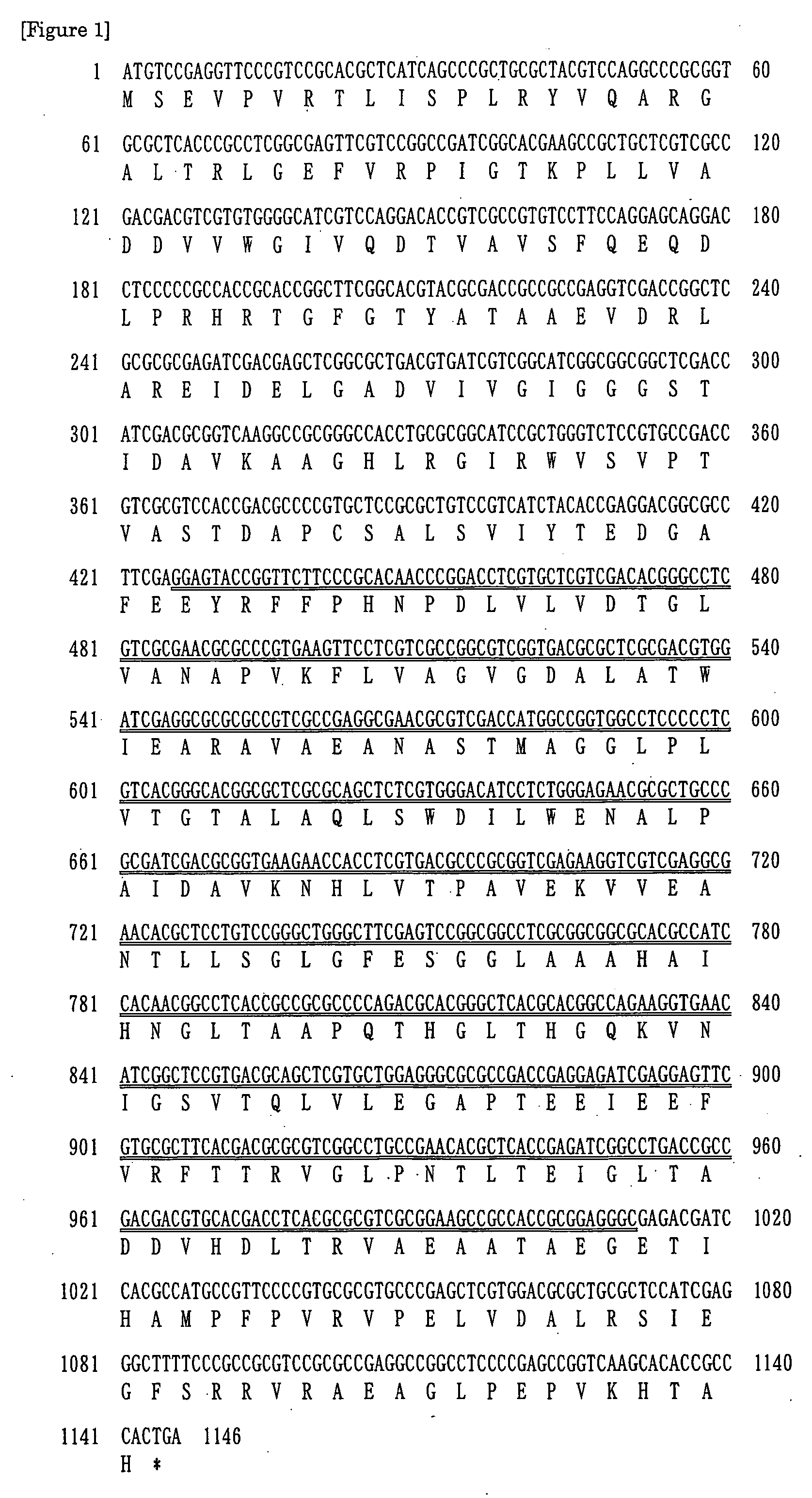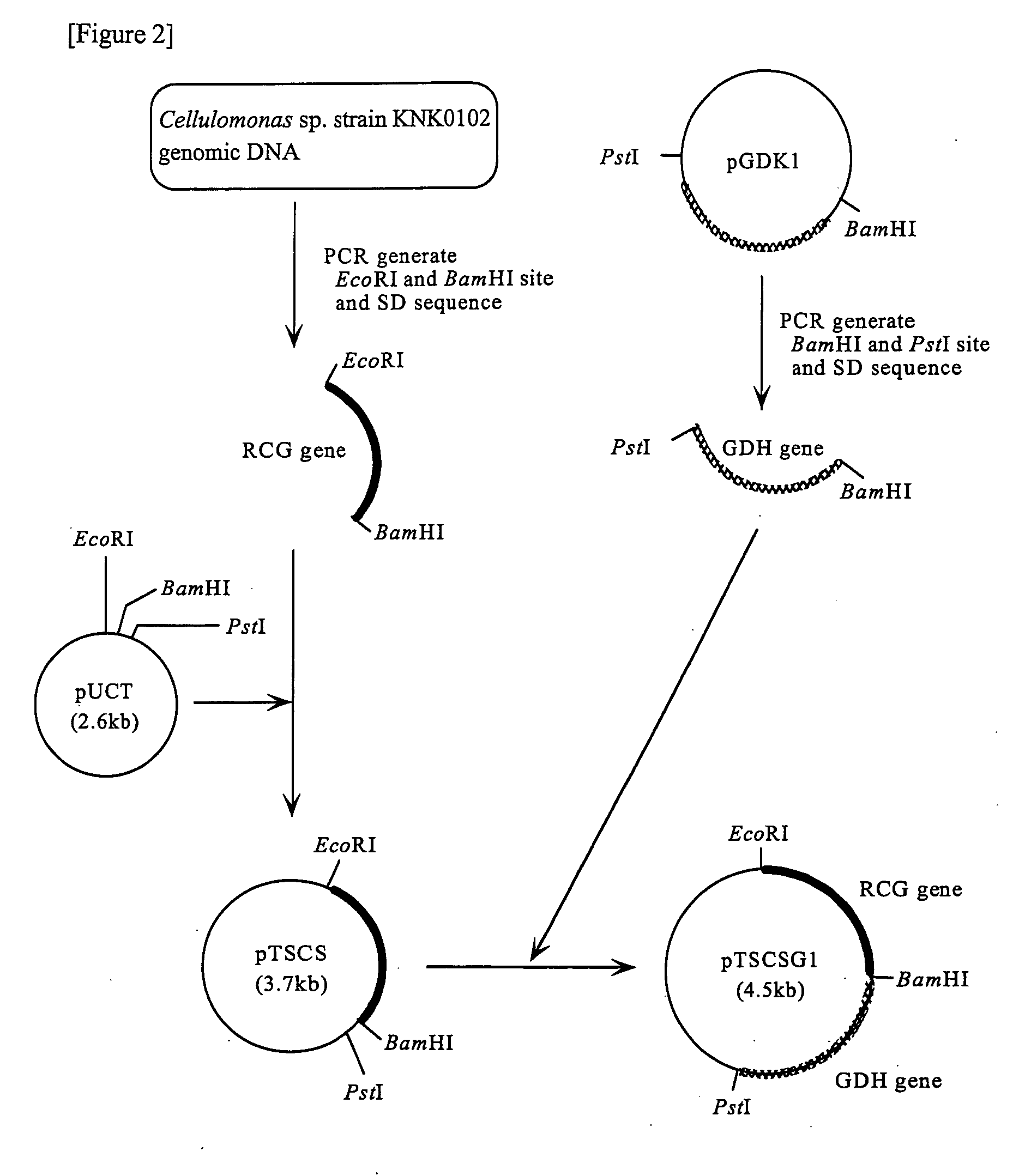Novel Glycerol Dehydrogenase, Gene Therefor, and Method of Utilizing the Same
a technology of glycerol dehydrogenase and gene, which is applied in the field of new polypeptides, can solve the problems of low conversion rate from substrate to product, high cost of commercial enzymes, and low concentration of substrates to be charged
- Summary
- Abstract
- Description
- Claims
- Application Information
AI Technical Summary
Benefits of technology
Problems solved by technology
Method used
Image
Examples
example 1
Cloning of a Novel Glycerol Dehydrogenase
[0107]Based on the conserved sequence of amino acids commonly present in glycerol dehydrogenase, a DNA sequence was expected from the amino acid sequence and Primer 1 (5′-ACNGAYGARGGNGMNTTYGA-3′: SEQ ID NO: 3) and Primer 2 (5′-GGCATNTKRTGDATNGTYTC-3′: SEQ ID NO: 4) are synthesized. A buffer for ExTaq (50 μl) containing: two primers (Primer 1 and Primer 2), each 200 μmol; 1.2 μg of chromosomal DNA from Cellulomonas sp. strain KNK0102; dNTPs, each 10 nmol; and 2.5 U of ExTaq (from Takara Shuzo) was prepared, 30 cycles of thermal denaturation (97° C., 0.5 min.), annealing (45° C., 1 min.), and extension (72° C., 1 min.) were conducted followed by cooling to 4° C., and then amplified DNA was confirmed by agarose gel electrophoresis.
[0108]Chromosomal DNA from Cellulomonas sp. strain KNK0102 used for this reaction was prepared according to the preparation method in small quantities of bacterial genome DNA described in Bunshiseibutsugaku Jikken Puro...
example 2
Preparation of a Recombinant Vector Comprising the RCG Gene
[0111]In order that RCG is expressed in E. coli, a recombinant vector to be used for transformation was prepared. Double-stranded DNA, in which a NdeI site was added to the initiation codon region of the RCG gene, and a new termination codon and an EcoRI site were added just after the termination codon, was obtained by the method described below.
[0112]Based on the nucleotide sequence determined in Example 1, Primer 5 (5′-GATCATATGTCCGAGGTTCCCGTCCGC-3′: SEQ ID NO: 7) in which a NdeI site was added to the initiation codon region of the RCG gene, and Primer 6 (5′-CTAGAATTCTTATCAGTGGGCGGTGTGCTTGAC-3′: SEQ ID NO: 8) in which a new termination codon (TAA) and an EcoRI site were added just after the termination codon of the RCG gene were synthesized. A buffer for ExTaq (50 μl) containing: two primers (Primer 5 and Primer 6), each 50 μmol; 950 ng of chromosomal DNA of Cellulomonas sp. strain KNK0102; dNTPs, each 10 nmol; and 2.5 U o...
example 3
Addition of a Shine-Dalgarno Sequence in the Upstream of the RCG Gene
[0113]In order that the RCG gene is expressed in E. coli at a high level, a plasmid in which a Shine-Dalgarno sequence (9 bases) of E. coli is additionally added upstream of the initiation codon of the same gene in the plasmid pNTCS prepared in Example 2 was obtained by the method described below.
[0114]First, G in the NdeI site of the E. coli expression vector pUCNT used in Example 2 was converted into T by PCR to construct the plasmid pUCT. Next, based on the nucleotide sequence determined in Example 1, Primer 7 (5′-GCCGAATTCTAAGGAGGTTAACAATGTCCGAGGTTCCCGTCCG-3′: SEQ ID NO: 9) in which at 5 bases upstream from the initiation codon of the RCG gene, a Shine-Dalgarno sequence (9 bases) of E. coli, and also just before it, an EcoRI site were added; and Primer 8 (5′-GCGGGATCCTTATCAGTGGGCGGTGTGCTTGA-3′: SEQ ID NO: 10) in which just after the termination codon of the RCG gene, a new termination codon (TAA) and a BamHI si...
PUM
 Login to View More
Login to View More Abstract
Description
Claims
Application Information
 Login to View More
Login to View More - R&D
- Intellectual Property
- Life Sciences
- Materials
- Tech Scout
- Unparalleled Data Quality
- Higher Quality Content
- 60% Fewer Hallucinations
Browse by: Latest US Patents, China's latest patents, Technical Efficacy Thesaurus, Application Domain, Technology Topic, Popular Technical Reports.
© 2025 PatSnap. All rights reserved.Legal|Privacy policy|Modern Slavery Act Transparency Statement|Sitemap|About US| Contact US: help@patsnap.com



